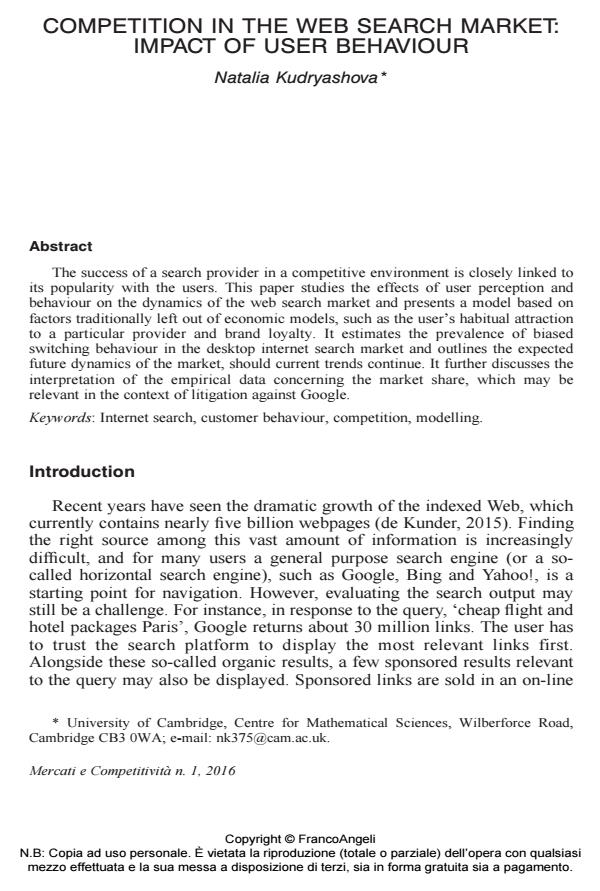Competition in the web search market: impact of user behaviour
Journal title MERCATI E COMPETITIVITÀ
Author/s Natalia Kudryashova
Publishing Year 2016 Issue 2016/1
Language English Pages 31 P. 145-175 File size 237 KB
DOI 10.3280/MC2016-001008
DOI is like a bar code for intellectual property: to have more infomation
click here
Below, you can see the article first page
If you want to buy this article in PDF format, you can do it, following the instructions to buy download credits

FrancoAngeli is member of Publishers International Linking Association, Inc (PILA), a not-for-profit association which run the CrossRef service enabling links to and from online scholarly content.
The success of a search provider in a competitive environment is closely linked to its popularity with the users. This paper studies the effects of user perception and behaviour on the dynamics of the web search market and presents a model based on factors traditionally left out of economic models, such as the user’s habitual attraction to a particular provider and brand loyalty. It estimates the prevalence of biased switching behaviour in the desktop internet search market and outlines the expected future dynamics of the market, should current trends continue. It further discusses the interpretation of the empirical data concerning the market share, which may be relevant in the context of litigation against Google.
Keywords: Internet search, customer behaviour, competition, modelling
Natalia Kudryashova, Competition in the web search market: impact of user behaviour in "MERCATI E COMPETITIVITÀ" 1/2016, pp 145-175, DOI: 10.3280/MC2016-001008